Looking for a charming, picturesque medieval European treasure? Then you must consider Salzburg! Nestled in Austria’s western Mönchsberg mountain range region, Salzburg began as an 8th-century Roman settlement along the Salzach River. It became an important trading location because of the salt found nearby. Salt (“salz” in German) was a valuable commodity as it helped preserve food before refrigeration. Salt was mined in this region and then transported by barges to other cities along the river that runs through town.
Today, it’s the fourth largest city in Austria. Visitors flock to this UNESCO World Cultural Heritage Site for its various attractions. In and around Salzburg, you’ll find palaces with extensive gardens, Mozart’s birthplace, and concerts showcasing his music. Of course, spots in and around Salzburg were highlighted in the 1965 movie The Sound of Music. Not to be left out is a mighty mountaintop fortress, plus a prominent cathedral and churches dating back centuries. The Old Town (Altstadt), on the west side of the river, is where most of the city’s charm lies, as well as some inviting hotels and eateries. The New Town (Neustadt), on the east side of the river, has Mirabell Gardens, a train station, museums, hotels and restaurants.
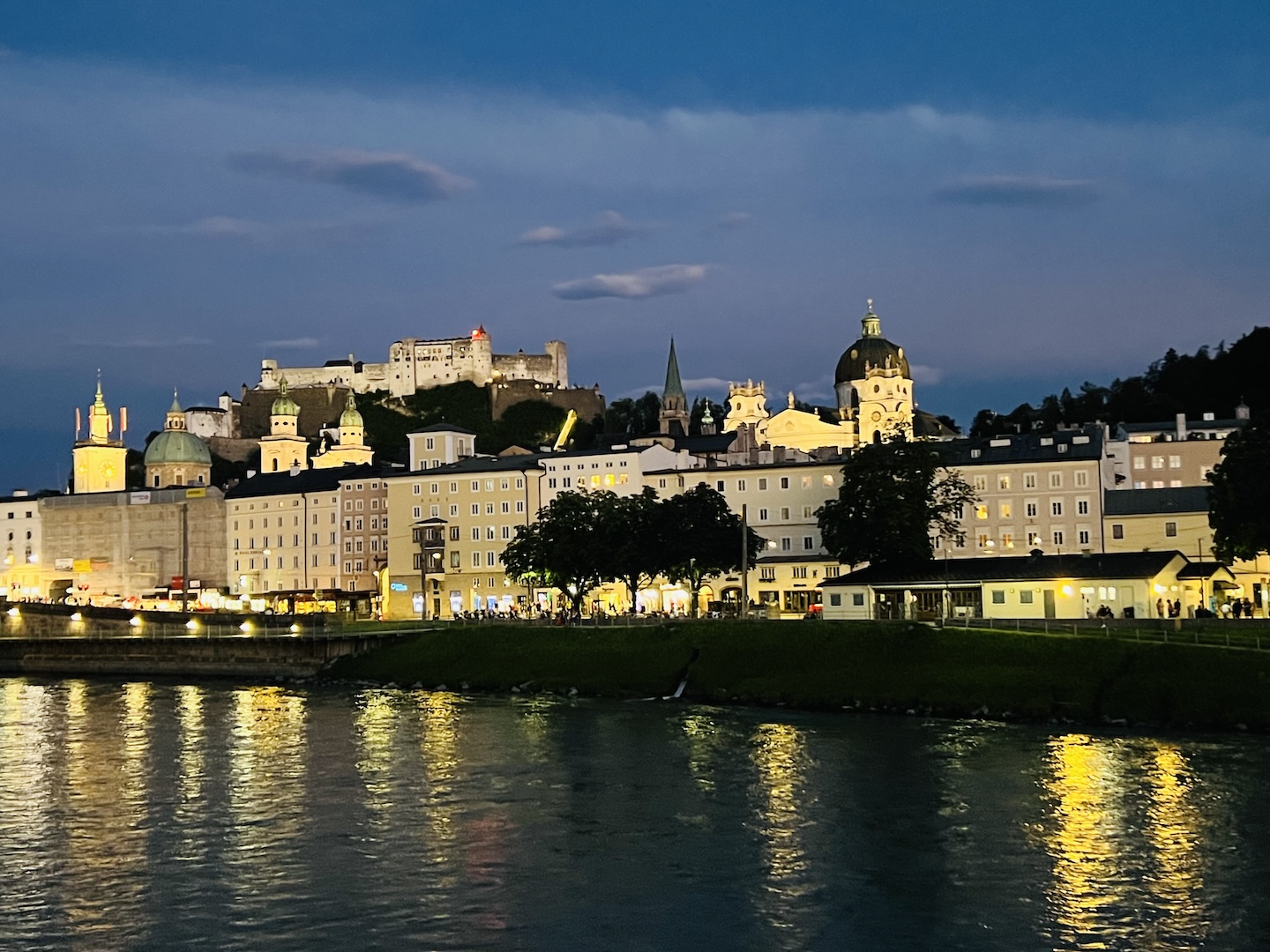
My husband and I spent several days in Salzburg and found it such a relaxing place to explore. We strolled the historic streets and were charmed by this medieval city. We visited some beer gardens offering traditional fare, enjoyed a concert featuring Mozart’s music, explored Mirabell Gardens with its iconic Sound of Music features, and visited other notable places. When it was time to leave, we wished we had another day or two in this special spot.
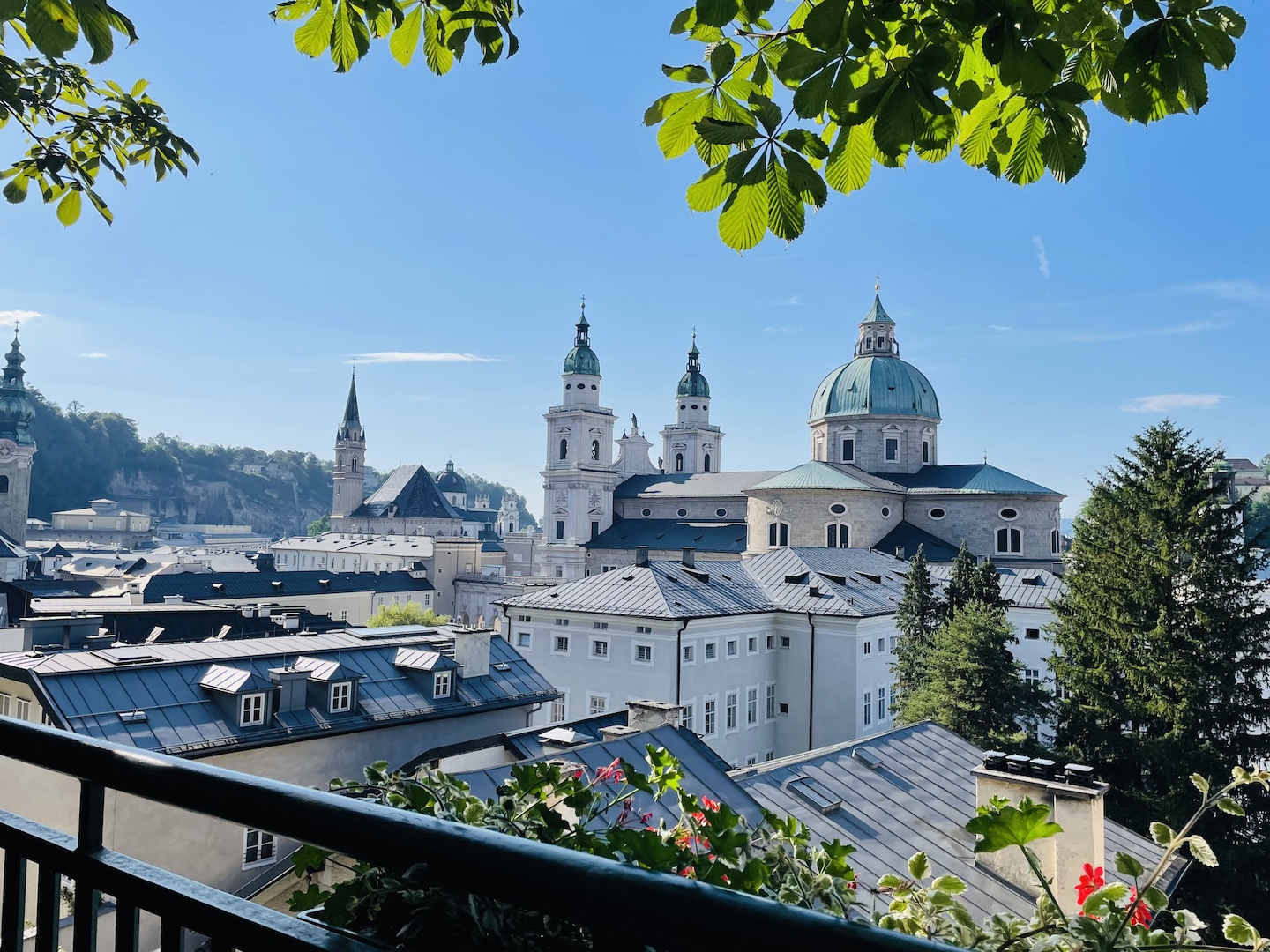
Strolling through the narrow streets, large squares, and along the river is a great way to experience this charming city. While walking, gaze up to the top of the buildings. You’ll likely see dates painted on the facades under the rooflines: the first date denotes the year the building was first built; subsequent dates indicate the years the building was renovated.
Key Sights in Salzburg
Getreidesgasse
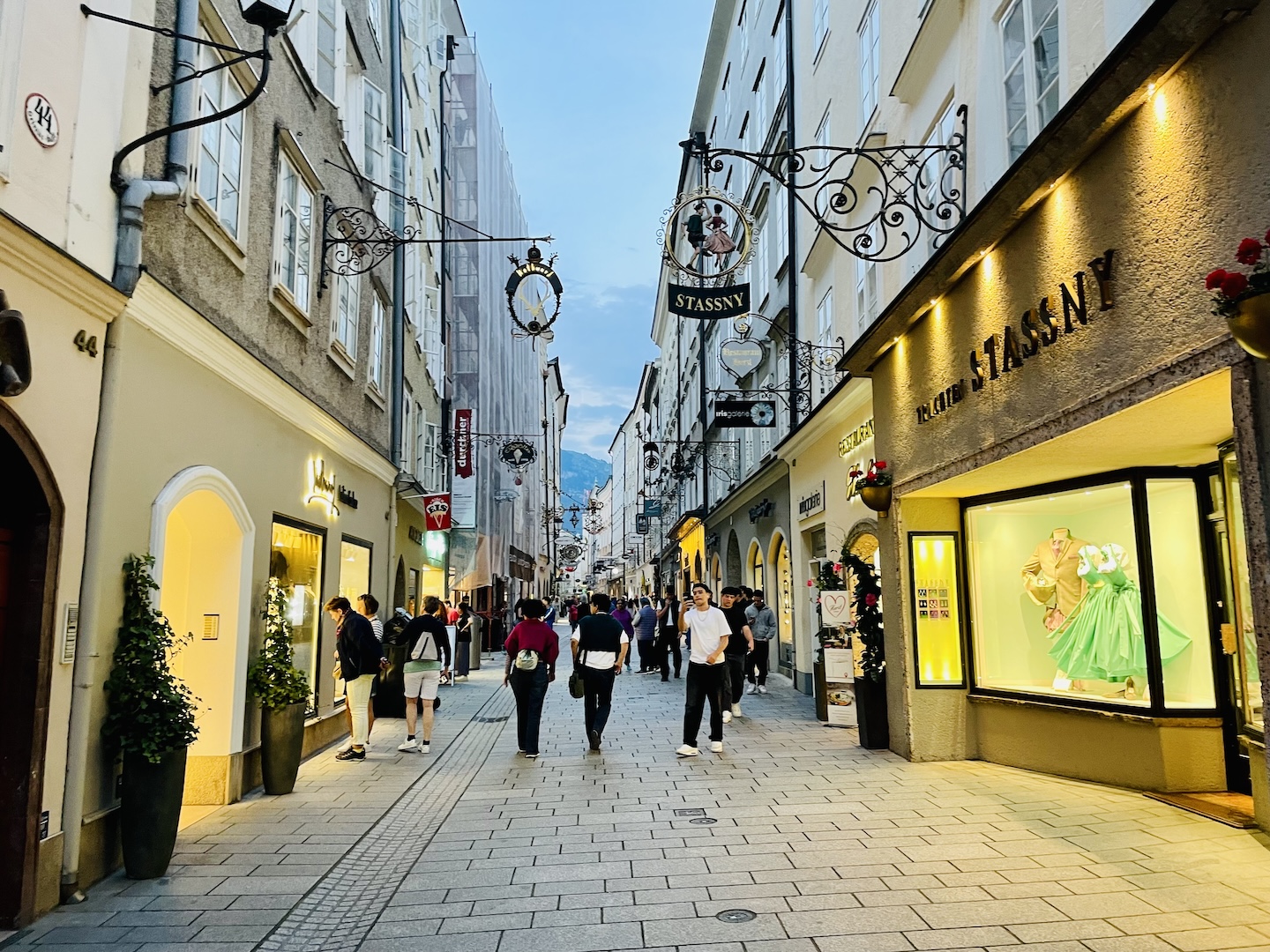
Getreidesgasse is a long shopping avenue on the river’s west bank with medieval vestiges like quaint wrought-iron shop signs. Signage outside the buildings indicates what type of merchant had businesses there. Centuries ago, the general population was illiterate, and these signs helped them navigate to the various merchants. No. 9 is where Mozart was born and lived until he was 17.
Hohensalzburg Fortress (Festung)
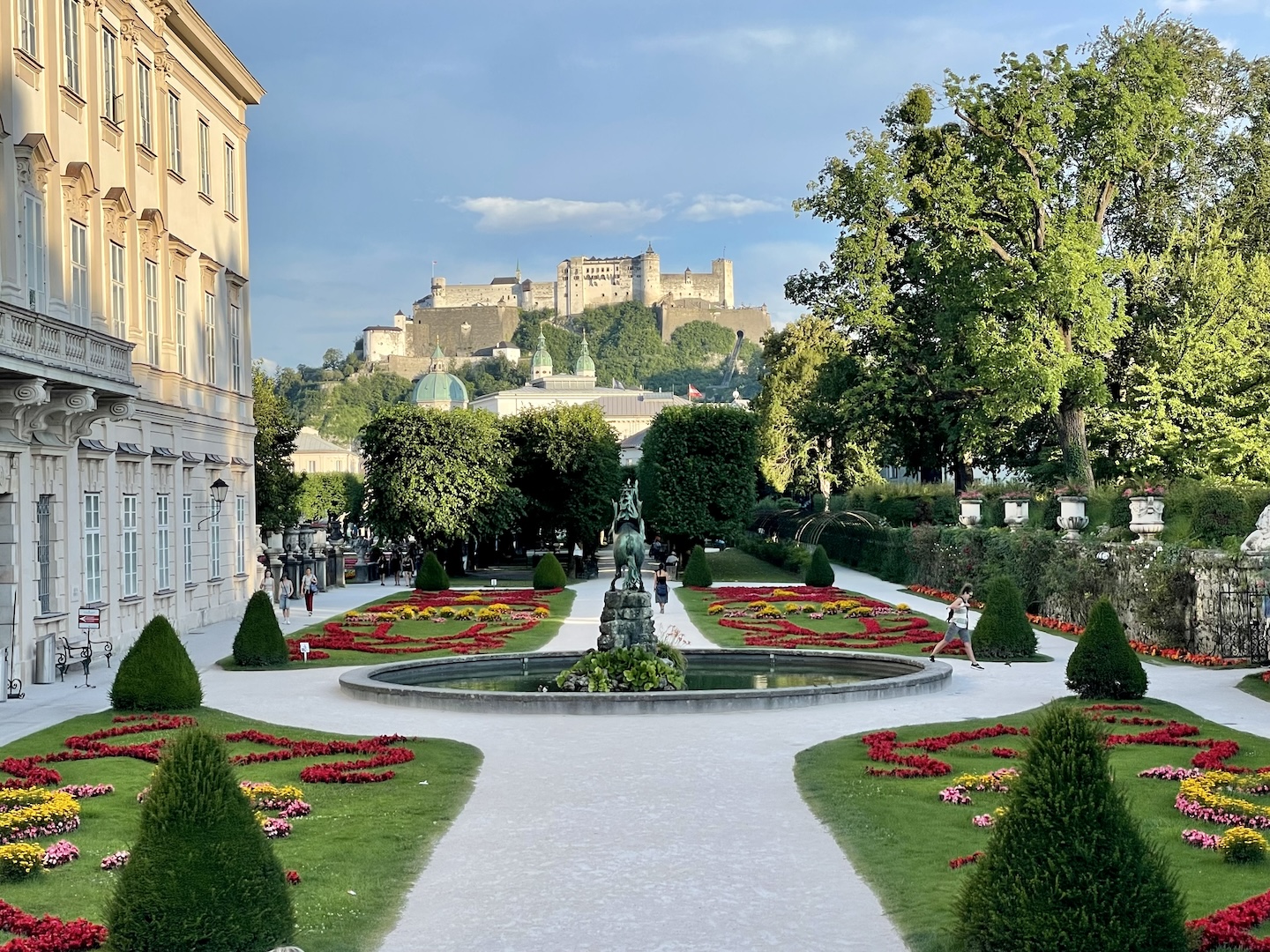
The 11th-century Hohensalzburg Fortress, which presents a commanding profile above the Salzach River, was built to flaunt the Catholic Church’s influence and to intimidate and deter possible invaders. Once inside, there’s plenty to see, including the Bastion, the fortress museum, staterooms, and various exhibits. My husband and I enjoyed a late lunch at one of several fortress cafés offering stellar views of Salzburg and the countryside (depending on which café you choose).
There are several ticket choices, including a panorama ticket to take in the views and an all-inclusive ticket that includes the fortress rooms and museums. Some tickets include the one-minute funicular (Festungsbahn) ride if that’s how you plan to ascend the mountain; otherwise, you can walk up in 20-30 minutes. Open May-September: 8:30 am – 8:00 pm; October-April: 9.30 am–5.00 pm. Located at Mönchsberg 34
Kapitelplatz
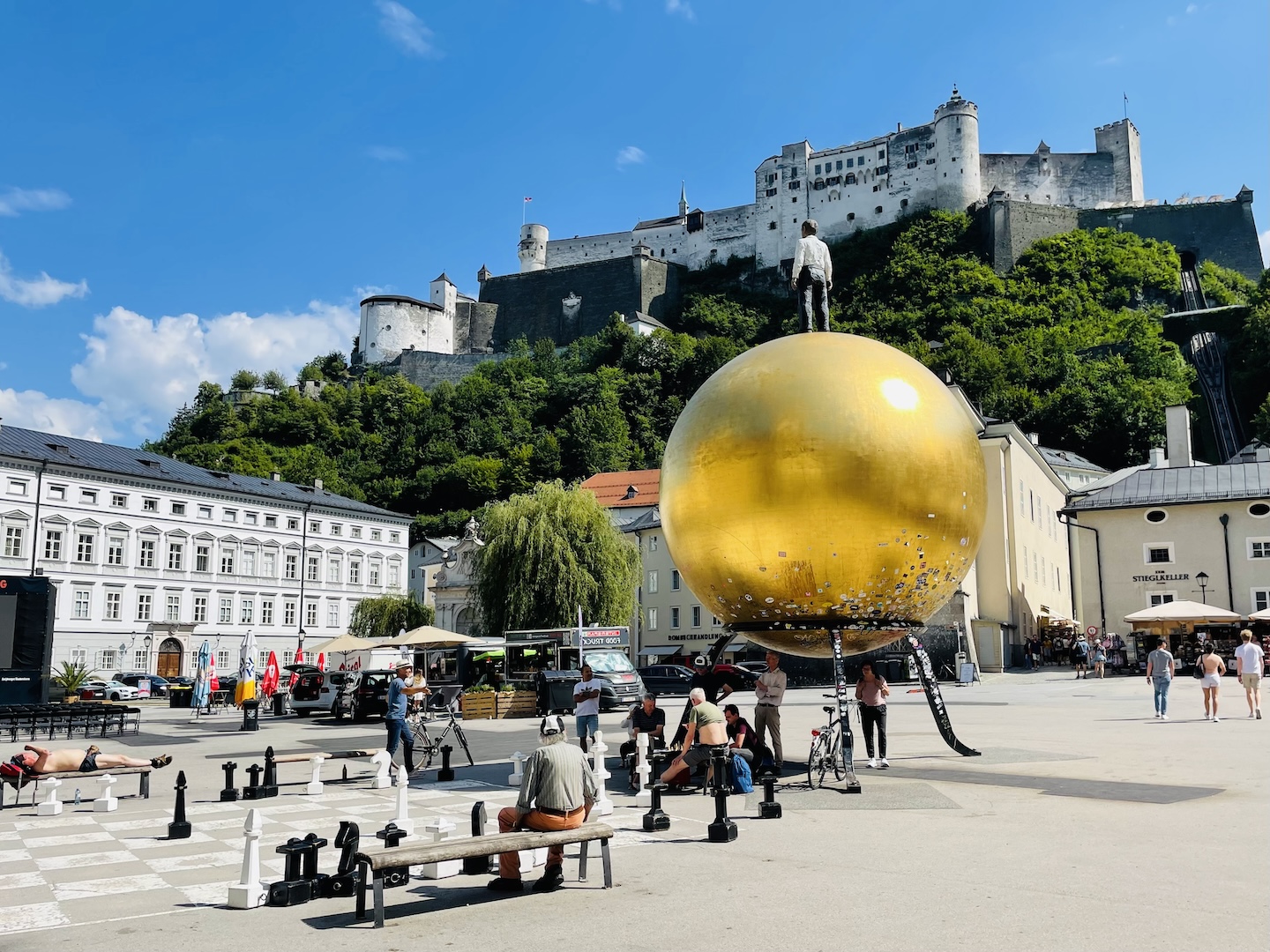
Salzburg’s lively square on the west side has fountains, a massive chessboard, a huge golden orb, and touristy kiosks. You’ll walk through it if you’re headed to Hohensalzburg Fortress (Festung) and the funicular.
Mirabell Palace and Gardens
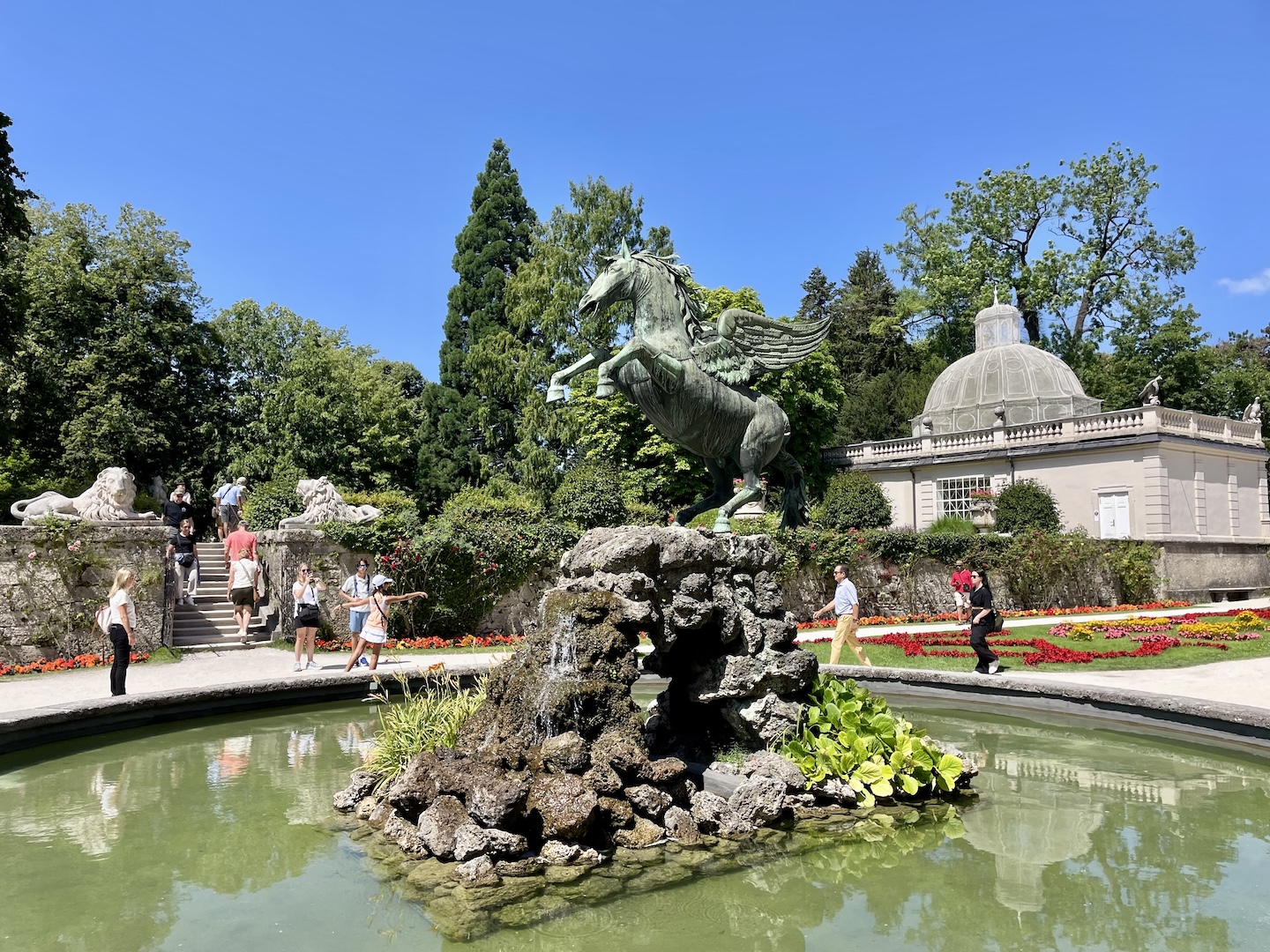
The stately Mirabell Palace was built along the river in the early 17th century and rebuilt in the 19th century. Once home to archbishops and crown princes, the city of Salzburg purchased it in the 19th century. Today, it’s a lovely place to stroll and marvel at the garden’s statues, plantings, and fountains. You’ll no doubt see some features highlighted in The Sound of Music. For example, the actors portraying the VonTrapp children sang by the Pegasus statue. Check online for concert offerings. Located at Mirabellplatz 4
Mozart Landmarks
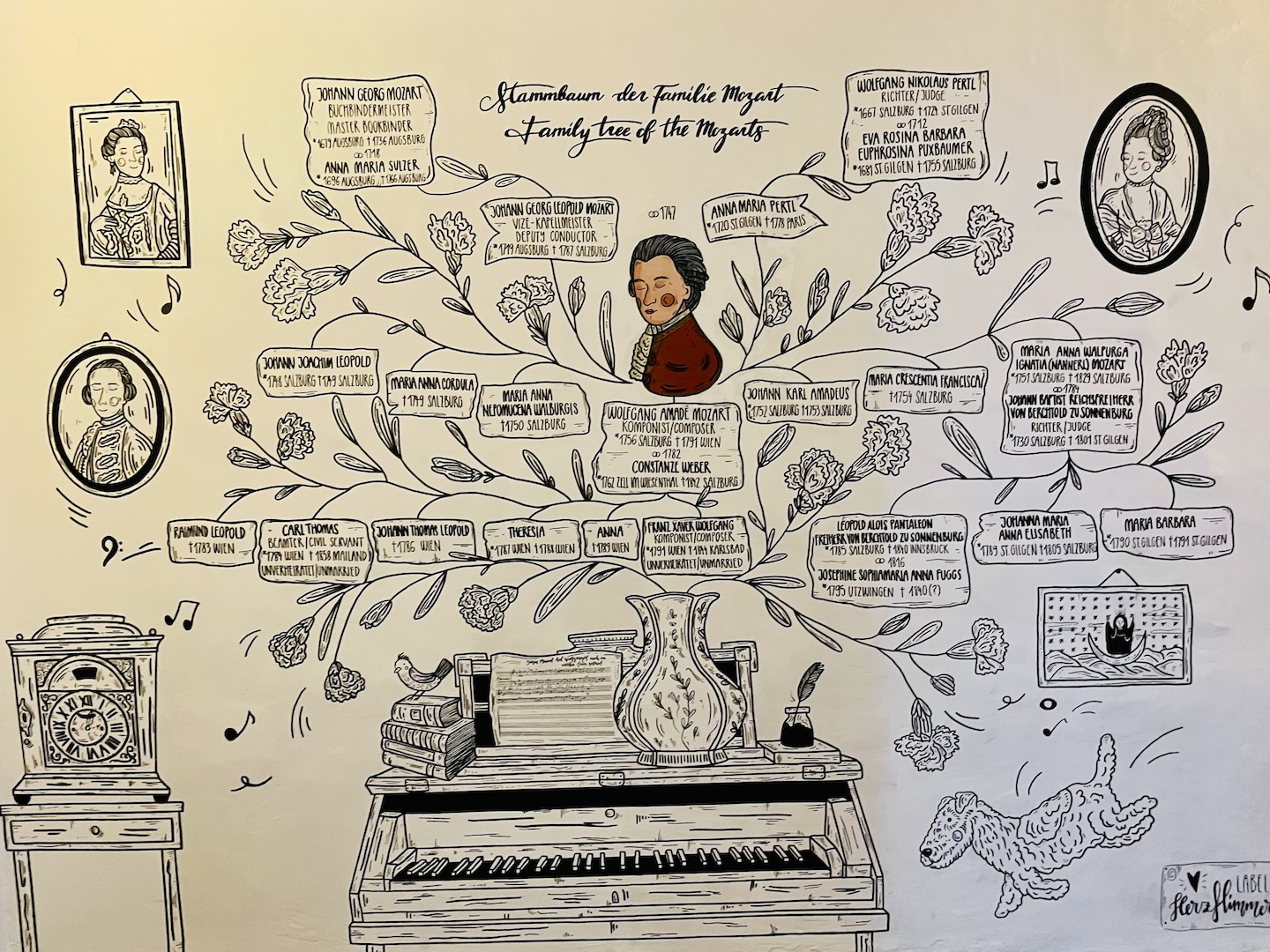
Mozart’s Birthplace (Geburthaus), where the composer was born in 1756, showcases some of his instruments and memorabilia – including locks of his hair, his wallet, a ring, and copies of some of his correspondence. Open September to June from 9:00 am to 5:30 pm; July and August from 8:30 am to 7:30 pm. Located at Getreidegasse 9.&nbs
